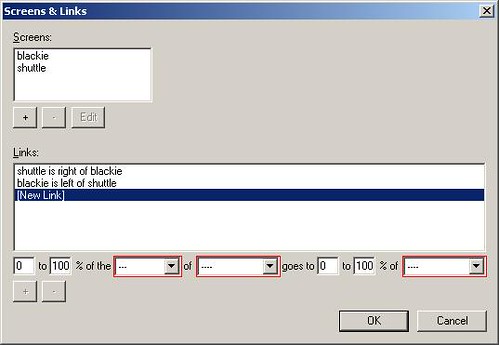Once again cleaning up a pile of switches hanging off each other. I’m starting with taking a Dell Powerconnect 2748 switch and trunking it back to a Cisco Catalyst 6509. Run two network links with the intention of aggregating them. Interestingly this overview page says the 3448 and 2424 support “Link Aggregation with support for up to eight aggregated links per switch and up to eight ports per aggregated link (IEEE 802.3ad); LACP support” but the corresponding box for the 2748 is empty.
Under the tech specs for the 3448:
Link Aggregation with support for up to 8 aggregated links per switch and up to 8 member ports per aggregated link (IEEE 802.3ad)LACP support (IEEE 802.3ad)
And the tech specs for the 2748 (which I have):
Industry-standard link aggregation adhering to IEEE 802.3ad standardsSupports 6 link aggregation groups and up to 4 ports per group
When configuring the two ports for a channel group:
configure terminal
interface range g7/1 – 2
channel-protocol lacp
channel-group 1 mode active
The ports would come up but I’d see intermittent packet loss on pings.
sw01#show etherchannel 1 detail
Group state = L2
Ports: 2 Maxports = 16
Port-channels: 1 Max Port-channels = 16
Protocol: LACP
Ports in the group:
——————-
Port: Gi7/1
————Port state = Up Sngl-port-Bndl Mstr Not-in-Bndl
Channel group = 1 Mode = Passive Gcchange = –
Port-channel = null GC = – Pseudo port-channel = Po1
Port index = 0 Load = 0x00 Protocol = LACPFlags: S – Device is sending Slow LACPDUs F – Device is sending fast LACPDUs.
A – Device is in active mode. P – Device is in passive mode.Local information:
LACP port Admin Oper Port Port
Port Flags State Priority Key Key Number State
Gi7/1 SP indep 32768 0x1 0x1 0x701 0x7CAge of the port in the current state: 00d:00h:05m:09s
Port: Gi7/2
————Port state = Up Sngl-port-Bndl Mstr Not-in-Bndl
Channel group = 1 Mode = Passive Gcchange = –
Port-channel = null GC = – Pseudo port-channel = Po1
Port index = 0 Load = 0x00 Protocol = LACPFlags: S – Device is sending Slow LACPDUs F – Device is sending fast LACPDUs.
A – Device is in active mode. P – Device is in passive mode.Local information:
LACP port Admin Oper Port Port
Port Flags State Priority Key Key Number State
Gi7/2 SP indep 32768 0x1 0x1 0x702 0x7CAge of the port in the current state: 00d:00h:05m:09s
Port-channels in the group:
———————-Port-channel: Po1 (Primary Aggregator)
————
Age of the Port-channel = 00d:00h:52m:26s
Logical slot/port = 14/1 Number of ports = 0
Port state = Port-channel Ag-Not-Inuse
Protocol = LACP
I’ve highlighted the interesting parts. The ports were coming up, but LACP wasn’t. I configured “LAG” on the 2748 by selecting the two corresponding ports on the “LAG Membership” page.
Doubting LACP support, I cleared the channel group configuration (no channel-group 1) and then configured only etherchannel support (channel-group 1 mode on). Now things look good!
sw01#show etherchannel 1 detail
Group state = L2
Ports: 2 Maxports = 8
Port-channels: 1 Max Port-channels = 1
Protocol: –
Ports in the group:
——————-
Port: Gi7/1
————Port state = Up Mstr In-Bndl
Channel group = 1 Mode = On/FEC Gcchange = –
Port-channel = Po1 GC = – Pseudo port-channel = Po1
Port index = 0 Load = 0x55 Protocol = –Age of the port in the current state: 00d:00h:10m:40s
Port: Gi7/2
————Port state = Up Mstr In-Bndl
Channel group = 1 Mode = On/FEC Gcchange = –
Port-channel = Po1 GC = – Pseudo port-channel = Po1
Port index = 1 Load = 0xAA Protocol = –Age of the port in the current state: 00d:00h:10m:40s
Port-channels in the group:
———————-Port-channel: Po1
————Age of the Port-channel = 00d:01h:04m:04s
Logical slot/port = 14/1 Number of ports = 2
GC = 0x00000000 HotStandBy port = null
Port state = Port-channel Ag-Inuse
Protocol = –Ports in the Port-channel:
Index Load Port EC state No of bits
——+——+——+——————+———–
0 55 Gi7/1 On/FEC 4
1 AA Gi7/2 On/FEC 4Time since last port bundled: 00d:00h:10m:40s Gi7/2
So 802.3ad == Etherchannel (Cisco) == LAG (Dell). No packet loss now, if you remembered that problem.
I have to figure LACP is the open way to auto-configure ports for 802.3ad or Etherchannel, and is the equivalent to using PAGP on Cisco gear. This is useful if you want your switches to negotiate etherchannel if possible, thus allowing you to add multiple cables and increase bandwidth without heavy reconfiguration. This Cisco page on LACP says:
LACP allows a switch to negotiate an automatic bundle by sending LACP packets to the peer.
As opposed to doing it by hand, which is plain old port aggregation. I wonder if in an older Cisco switch there’s an option for pre-802.3ad etherchannel and 802.3ad compatible eitherchannel. It’s interesting to note that in this switch the ‘switchport trunk encapsulation isl’ command doesn’t work on some cards as they only support 802.1q vlan trunking.
Really have to laugh at this errata though:
System Firmware Version 1.0.0.33
Known Restrictions and Limitations:
The login screen accepts any password with the default
username, admin.
I guess that’s a problem, yeah. It’s cool that this release was a year ago and the problem hasn’t been fixed. This is why we buy Cisco switches and not Dell switches people.

